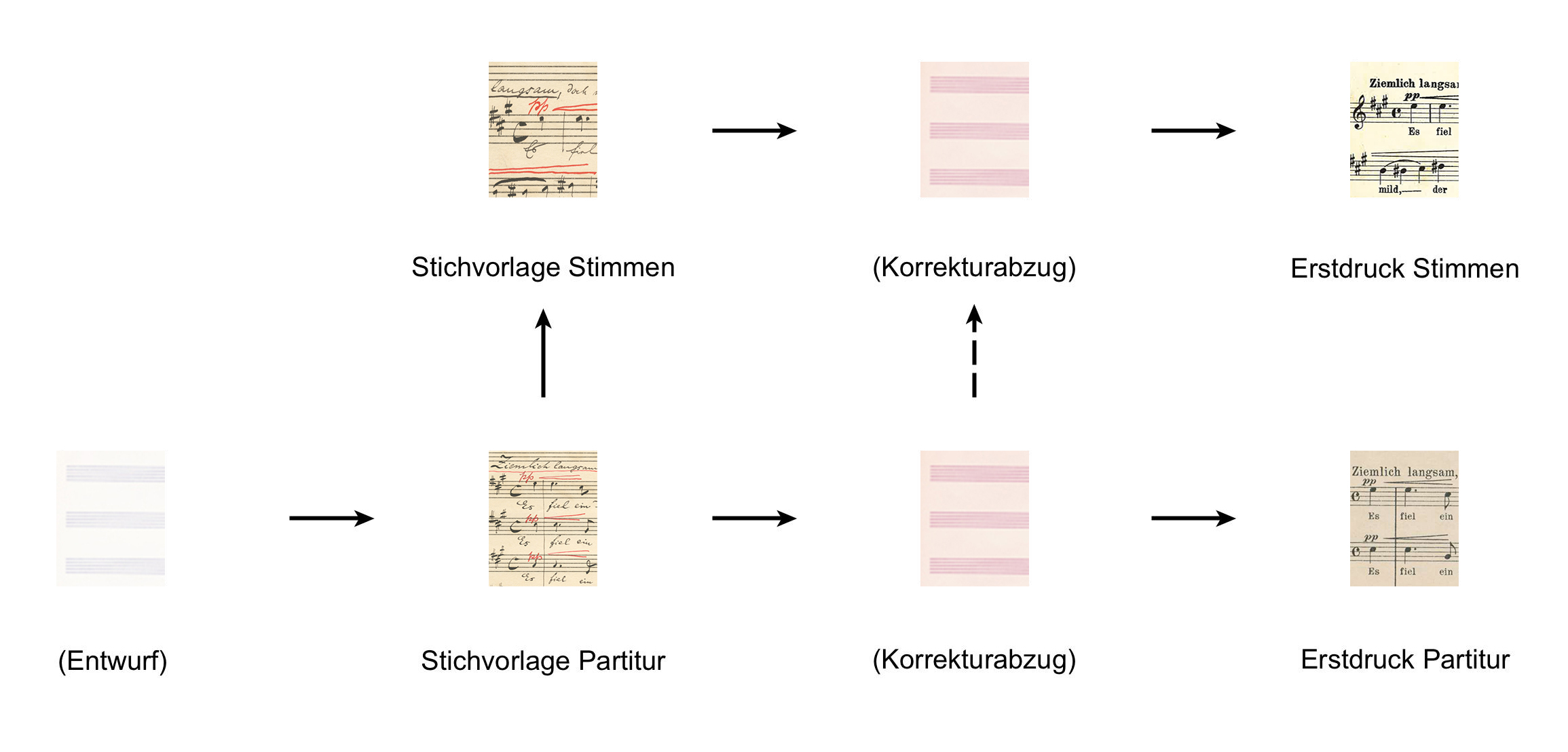Palmsonntagmorgen WoO VI/18
for five-part mixed voice unaccompanied choir
-
Text: Emanuel Geibel
Herrn Georg Stolz zugeeignet
- -
- -
- -
1.
| Reger-Werkausgabe | Bd. II/8: Werke für gemischten Chor a cappella I, S. 166–176. |
| Herausgeber | Alexander Becker, Christopher Grafschmidt, Stefan König, Stefanie Steiner-Grage. |
| Verlag | Carus-Verlag, Stuttgart; Verlagsnummer: CV 52.815. |
| Erscheinungsdatum | Juni 2018. |
| Notensatz | Carus-Verlag, Stuttgart. |
| Copyright | 2018 by Carus-Verlag, Stuttgart and Max-Reger-Institut, Karlsruhe – CV 52.815. Vervielfältigungen jeglicher Art sind gesetzlich verboten. / Any unauthorized reproduction is prohibited by law. Alle Rechte vorbehalten. / All rights reserved. |
| ISMN | M-007-18831-3. |
| ISBN | 978-3-89948-302-4. |
Emanuel Geibel: Palmsonntagmorgen, in:
id.: Neue Gedichte, J. G. Cotta’scher Verlag, Stuttgart and Augsburg
unknown
Used for comparison purposes in RWA: Emanuel Geibel: Palmsonntagmorgen, in:
id.: Neue Gedichte, 11th edition, J. G. Cotta’sche Buchhandlung, Stuttgart
Copy shown in RWA: DE, Karlsruhe, Max-Reger-Institut/Elsa-Reger-Stiftung.
Note: Georg Stolz, von dem Reger den Text mutmaßlich erhielt, könnte auch durch die Vertonungen Max Bruchs, Ferdinand Hillers oder Max Erdmannsdörfers auf diesen aufmerksam geworden sein.
Note: Die dritte Strophe wurde von Reger nicht vertont (siehe Textvergleich).
1. Composition
–––––––––––––––––
Composition · Publication · Early reception
2. Publication
–––––––––––––––––
Composition · Publication · Early reception
3.
Translation by Elizabeth Robinson.
1. Reception
–––––––––––––––––
Composition · Publication · Early reception
Reviews
2.
Translation by Elizabeth Robinson.
1. Stemma

2. Quellenbewertung
Der Edition liegt als Leitquelle die Erstdruck-Partitur zugrunde. Hinsichtlich der Platzierung der Dynamikangaben ist an einigen Stellen auch auf die handschriftlichen Quellen zurückgegriffen.
3. Sources
- Stichvorlage Partitur und Stimmen
- Erstdruck Partitur und Stimmen
Object reference
Max Reger: Palmsonntagmorgen WoO VI/18, in: Reger-Werkausgabe, www.reger-werkausgabe.de/mri_work_00220.html, version 3.1.1, 31st January 2025.
Information
This is an object entry from the RWA encyclopaedia. Links and references to other objects within the encyclopaedia are currently not all active. These will be successively activated.